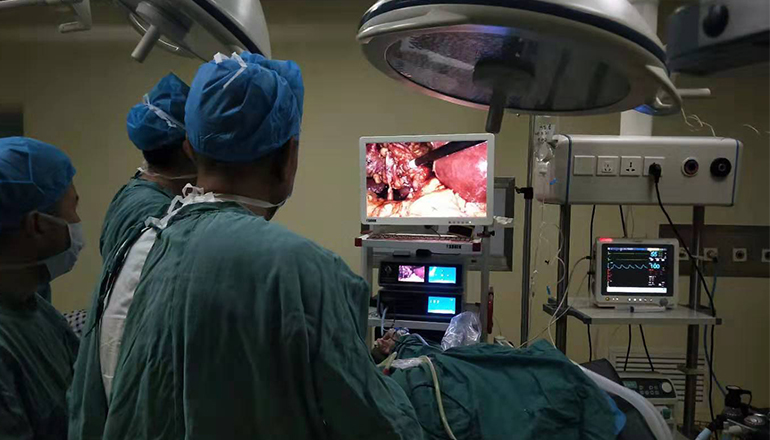- Shanghai, China
- [email protected]
- +86-21-58189111
Hepatic hemangioma resection is a surgical procedure that involves removal of a benign tumor of the liver known as a hepatic hemangioma. This procedure can be performed using minimally invasive laparoscopic techniques, which offer the benefits of less postoperative pain, smaller incisions, and faster recovery times compared to traditional open surgery.
Here are the steps for carrying out hepatic hemangioma resection under laparoscope:
Preparation: The patient is placed under general anesthesia, and the surgeon makes several small incisions in the abdomen to insert the laparoscope and other surgical instruments.
Mobilization of the liver: The surgeon uses laparoscopic instruments to mobilize the liver, which involves dividing the ligaments and vessels that attach the liver to surrounding structures.
Identification of the hemangioma: The surgeon then identifies the location and size of the hepatic hemangioma using laparoscopic imaging techniques.

Parenchymal transection: The surgeon then begins the process of dividing the liver tissue around the hemangioma by using a laparoscopic instrument to create a plane of dissection. This can be done using a variety of techniques, such as stapling or cauterizing the liver tissue.
Vascular division: The surgeon will then identify and divide the blood vessels that supply the hemangioma, including the hepatic artery and portal vein. This is typically done using laparoscopic instruments and specialized vascular stapling devices.
Removal of the hemangioma: Once the blood supply to the hemangioma has been completely divided and all vessels have been secured, the surgeon will remove the hemangioma through one of the small incisions using a specialized retrieval bag.
Hemostasis: Once the hemangioma has been removed, the surgeon will inspect the remaining liver tissue for any bleeding or bile leak, and take any necessary steps to achieve hemostasis, such as applying pressure or using a cauterizing device.
Closure: Finally, the small incisions are closed using sutures or surgical glue.
Postoperative care: The patient will be monitored in the recovery room and then transferred to a hospital room. Pain medications are given as needed, and the patient is encouraged to walk around and resume normal activities as soon as possible.
Potential complications: As with any surgical procedure, there are potential risks and complications associated with hepatic hemangioma resection under laparoscope. These may include bleeding, infection, bile leak, or damage to surrounding organs. However, these complications are rare, and the benefits of laparoscopic surgery typically outweigh the risks.
Follow-up: The patient will typically be scheduled for a follow-up appointment with their surgeon to monitor their recovery and ensure that the remaining liver tissue is functioning properly. Follow-up imaging studies may be necessary to confirm that the hemangioma has been completely removed.
Long-term outcomes: After a successful hepatic hemangioma resection, most patients can expect to fully recover within a few weeks and resume their normal activities without restrictions. In most cases, hepatic hemangiomas do not recur after removal, and patients can expect to live a normal and healthy life.
However, in some cases, patients with large or multiple hepatic hemangiomas may require additional follow-up and monitoring to ensure that new tumors do not develop in the liver. Patients with underlying liver disease or other medical conditions may also require additional monitoring to ensure that their liver function remains stable.
In summary, laparoscopic hepatic hemangioma resection is a safe and effective treatment option for patients with benign liver tumors. With proper patient selection and surgical technique, this procedure can provide excellent outcomes and a quick recovery time. If you are considering this procedure, talk to your doctor to determine if it may be a viable treatment option for you.
Leave a Comments